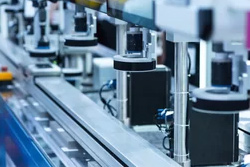
Sage X3 Newsletter – Q3 2019
Keeping You Up-To-Date With Information About Sage X3
Top Technologies Disrupting the Manufacturing Industry
 The world is in the midst of what many are calling the Fourth Industrial Revolution, and digital technology is upending every sector of the economy.
The world is in the midst of what many are calling the Fourth Industrial Revolution, and digital technology is upending every sector of the economy.
Nowhere is this more obvious than in manufacturing, where everything from planning, design, and preorder to supply chain, sales, and post-sales are benefiting from an extreme digital makeover. Here are four technologies that are disrupting manufacturing.
- Big data
It would be fair to say that big data is transforming all sectors of the economy, but manufacturing is benefiting especially because of the sheer amount of data it generates at every step of the manufacturing process, often using vast numbers of machines across national and international sites.
What big data – in conjunction with algorithm and cloud technologies – does that makes it such a game-changer is disseminate unprecedented amounts of information in real-time. This gives decision-makers a huge advantage when it comes to driving efficiency and perfecting processes. Additionally, the nature of big data means there is more fluid and seamless integration of a manufacturer’s IT systems such as Sage X3.
- Digital supply chain
The manufacturing supply chain is rapidly becoming unrecognizable from its pre-digital relatives. That’s largely thanks to the internet of things (IoT) technology, where strategically placed sensors are used to capture huge amounts of data that is then used to provide real-time feedback on every aspect of the supply chain, from sourcing raw materials to final product delivery.
Additionally, IoT is used in conjunction with big data to pinpoint any supply chain weaknesses, such as machinery that may require an upgrade, greatly improving overall efficiency.
Manufacturers are also increasingly incorporating artificial intelligence (AI), and augmented and virtual reality into their supply chains, giving them unprecedented insights over the entire scope of their operations.
This may include everything from ordering, procurement of raw materials and parts from suppliers, warehousing, freight and transport, staffing needs, and communicating with suppliers and customers. Manufacturers can then use that information to greatly reduce the time taken for the entire manufacturing process.
- 3D printing
3D printing is revolutionizing manufacturing, thanks to its ability to mass-produce products far more cost-effectively than at any time previous, and to customize items specifically to a consumer’s needs.
Using specific software applications, 3D printers use all the digital data at their disposal to produce three-dimensional objects using a host of different materials. Like a standard inkjet printer, 3D printers deposit the chosen material – anything from plastic to titanium, polymers, gold, and silver – which a laser beam then uses to solidify the material, creating the product by placing layers of parts on top of each other.
3D printing is still in its relatively formative stages, but its potential to disrupt manufacturing is obvious given its cost and time advantages. In the not-too-distant future, advanced 3D printers will incorporate a range of materials that can be used simultaneously for increasingly complex designs, allowing for far greater innovation and product trial and error.
- Artificial intelligence
Artificial intelligence, or advanced machine learning, represents the next frontier of digital manufacturing, where the scope and potential is seemingly limitless. In the foreseeable future, AI will likely be responsible for everything from vastly improved supply chains to virtual designs, customized consumer products, and whole new business models.
One area of AI that manufacturers are especially excited about is generative design, where designers and engineers input parameters for materials, costs and manufacturing methods into a generative design software program. That program then generates and tests a range of design alternatives in a fraction of the time that such design and testing would have previously taken.
AI will continue to open up a world of possibilities for manufacturers that need to bring their product to market as quickly and cost-effectively as possible.
Businesses of all types and sizes should be aware of these disruptions and adopt (or at least explore) them if they want to remain ahead of the curve and embrace their benefits.



